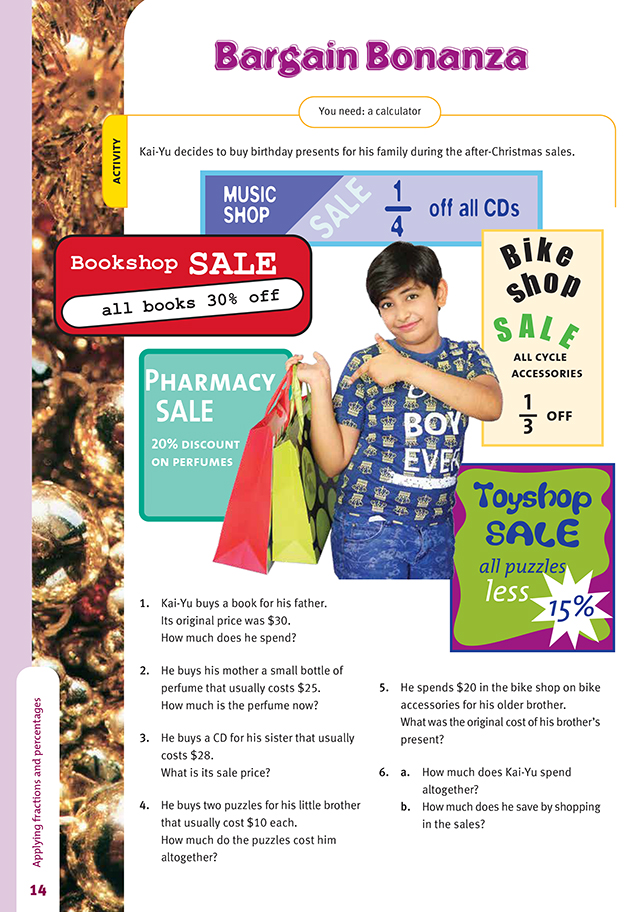This is a level 4 number link activity from the Figure It Out series. It relates to Stage 7 of the Number Framework.
A PDF of the student activity is included.
Click on the image to enlarge it. Click again to close. Download PDF (264 KB)
find fractions of a whole number
find a percentage of a whole number
FIO, Link, Number, Book Five, Bargain Bonanza, page 14
A calculator
This activity provides a range of valuable experiences to do with calculating percentages and fractional amounts that involve money. Retail competition is such that discounts and sales are a regular feature of our lives, so the students will often encounter them.
A good teaching point in this activity is to help the students to realise that the shortest way to calculate the price of the book in question 1 is to use the calculator to find 70% rather than 30% of the $30. This gives the sale price in one step instead of having to calculate and then subtract 30% from the $30. This can also be done mentally by translating the 70% to 7/10 , calculating 1/10 of 30, and then multiplying it by 7. If this is done on the calculator, the 70% has to be translated to its decimal equivalent, which is 0.7. Then it is simply a matter of multiplying 0.7 x 30 to get 21. Fundamental to this is the notion that finding 0.7 of an amount means multiplying the amount by 0.7.
With question 4, the students may wonder if finding the sale price of two $10 puzzles separately and then adding them would give the same total as finding 85% of double the amount, that is, $20. (It does.) If they do wonder about this, encourage them to investigate this important question too.
Notice that question 5 cleverly reverses the problem. Here the students need to use logic to realise that the $20 spent represents 2/3 of the original cost. There are different ways of calculating the original price. Perhaps the easiest way is to work out 1/3 (half of 20 is $10) and multiply this amount by 3, giving $30. Whatever we do to the 2/3 to get 3/3 (it has to be multiplied by 1.5), we have to do the same to the $20
(so 20 x 1.5 = 30).
A possible extension of this activity would be for the students to collect local data about sales and special offers (from the media, brochures, circulars, and shops) and pose their own questions for investigation. They could work individually or in pairs to investigate either their own or others’ questions.
Answers to Activity
1. $21
2. $20
3. $21
4. $17
5. $30
6. a. $99
b. $34
